How much water does a typical game studio use?

According to UN Water, Monday 17th June is “World Day to Combat Desertification and Drought.” I started working on this piece without knowing about that bit of serendipity, but it came up because I’ve been thinking about resource use including water use, as it comes up in some work I’m doing around the new European Sustainability Reporting Standards (ESRS). One of the many, many topics that are mandatory to disclose under the new ESRS regime is the use of “marine resources and water” – which got me thinking… how much water does the typical game studio use? And is it material? As in, does it matter, or make a difference how much one uses? I had no idea.
But we do have a way to find out – because some companies tell us in their annual ESG disclosures. So, as the proud owner of (probably) the world’s largest collection of game industry ESG reports, I decided to look at what figures I could find for water use. Of the companies I’ve looked at previously in the net zero snapshot, only a fraction had figures for water withdrawals. What I came up with after consulting the PDFs is a very partial picture – nine companies provided usable figures for their water use, and here they are, arranged by company size (employee count) for reference.
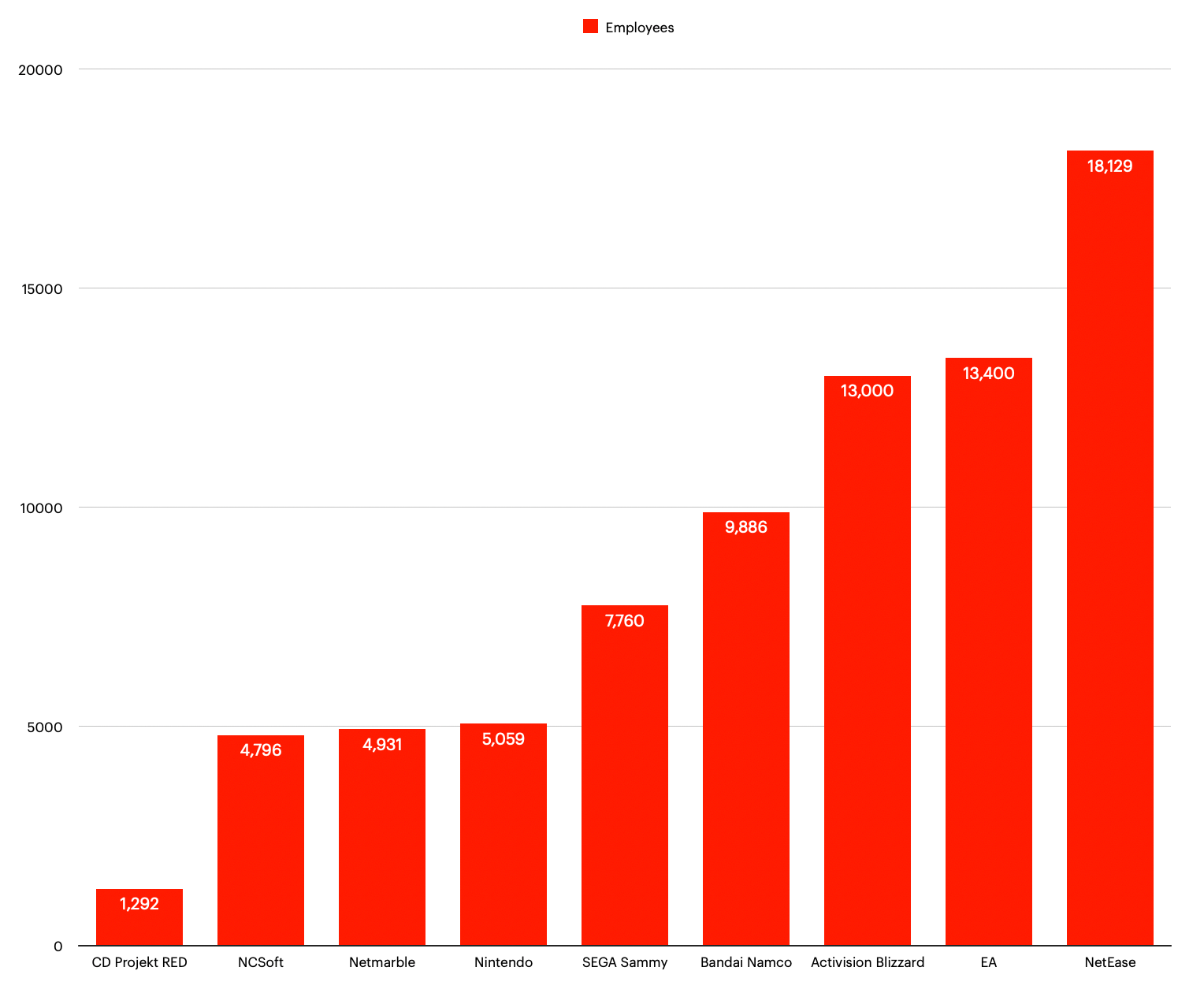
And here’s the chart showing annual water withdrawals (the Y-axis is in cubic metres) disclosed by each game company, stacked on top of their employee counts.
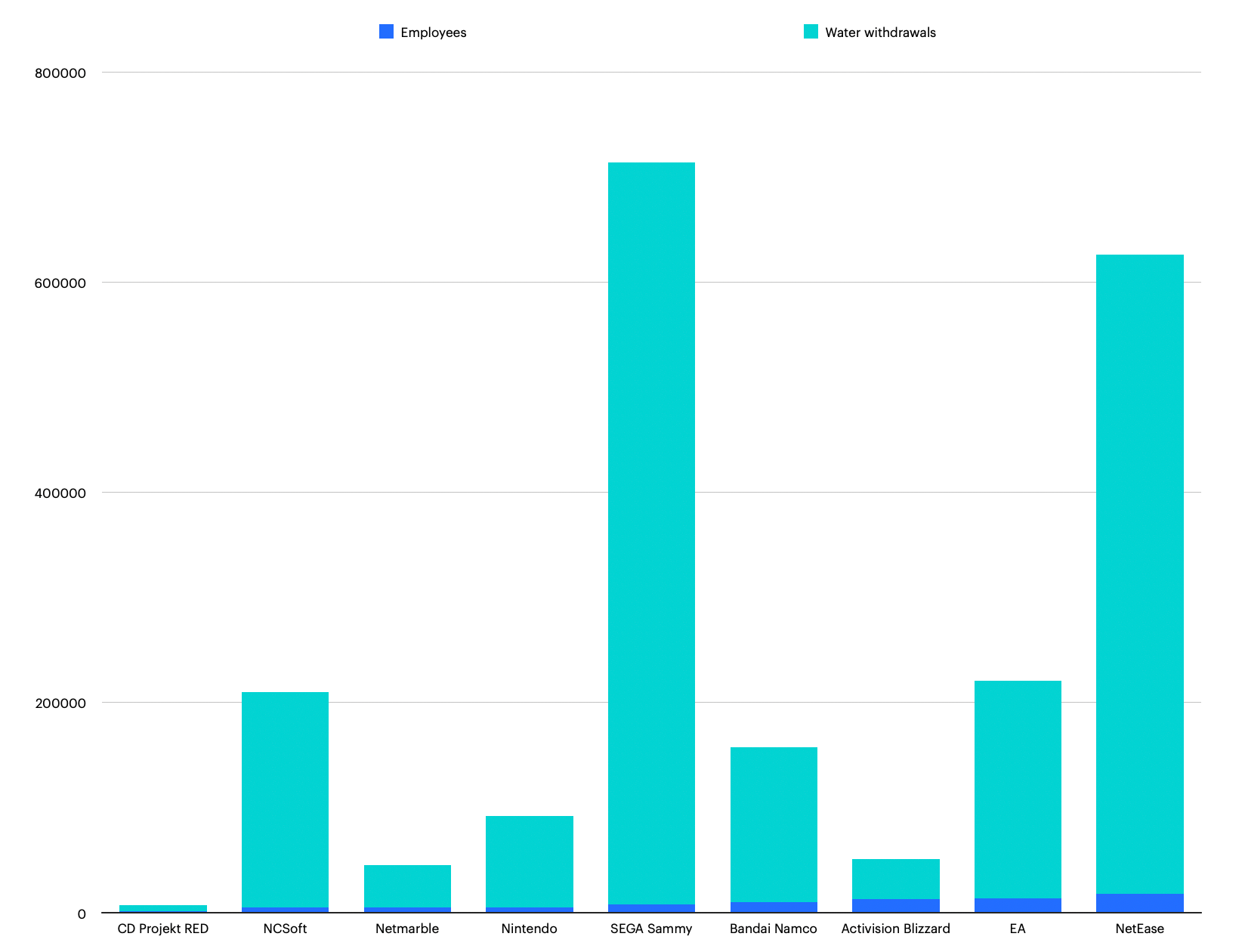
This is quite a strange result because there might seem to be no strong relationship between company size and water withdrawals. I would have thought that if you had 10x the employees, you might use about 10x the water... but is that the case? Well, if we treat SEGA Sammy as an outlier (since they also have a factory that makes Pachinko Slot Machines; a bit different from game development) and leave them out then things normalise a bit.
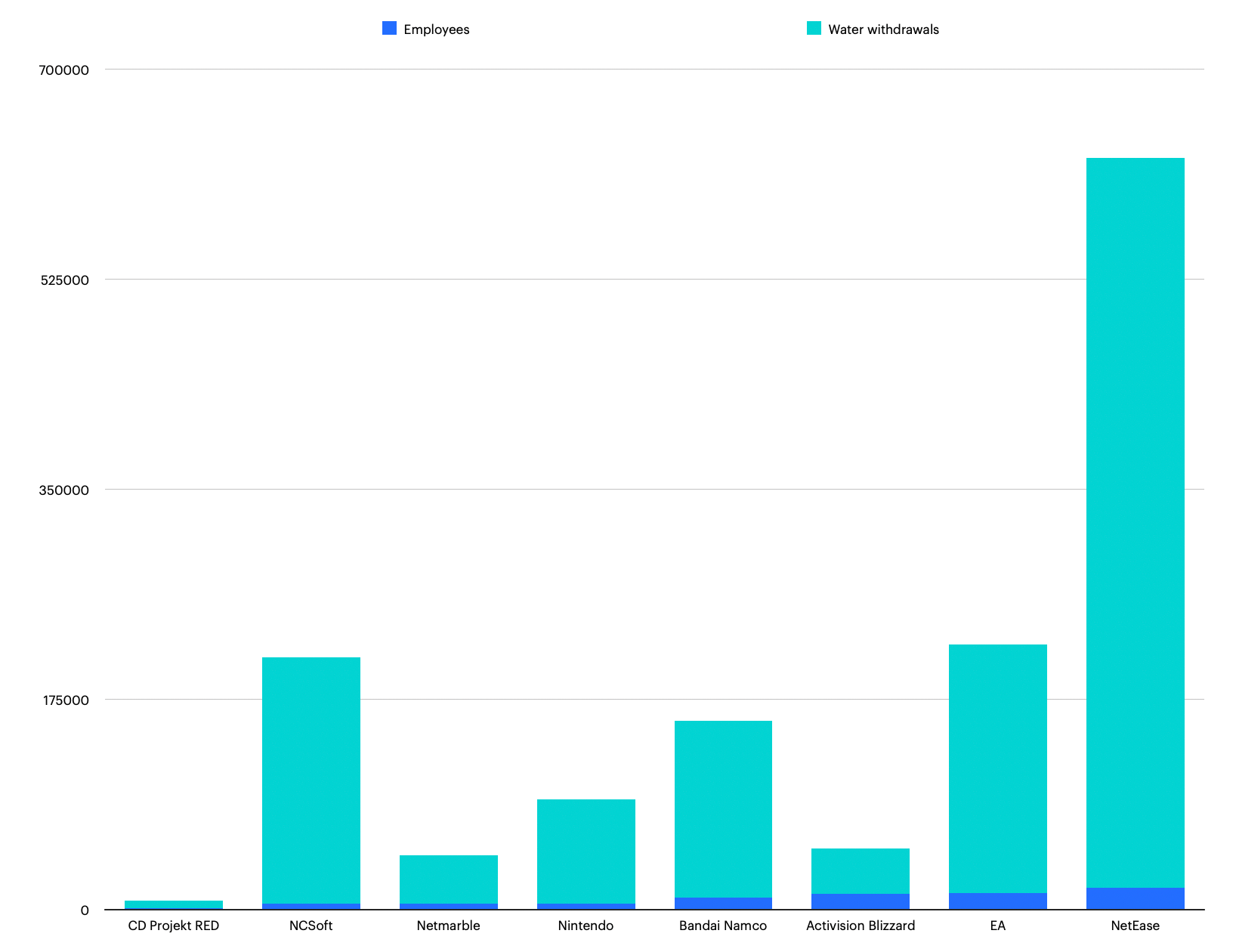
And here's the same chart, but showing the ratio of employees to water withdrawals – showing that, yes, once SEGA Sammy is out of the picture everyone does have a pretty similar ratio (with Activision Blizzard and CDPR notably a bit out of band, but in a positive way).

We can also express the same data more simply, as cubic metres of water, per employee, per annum – which looks like this:
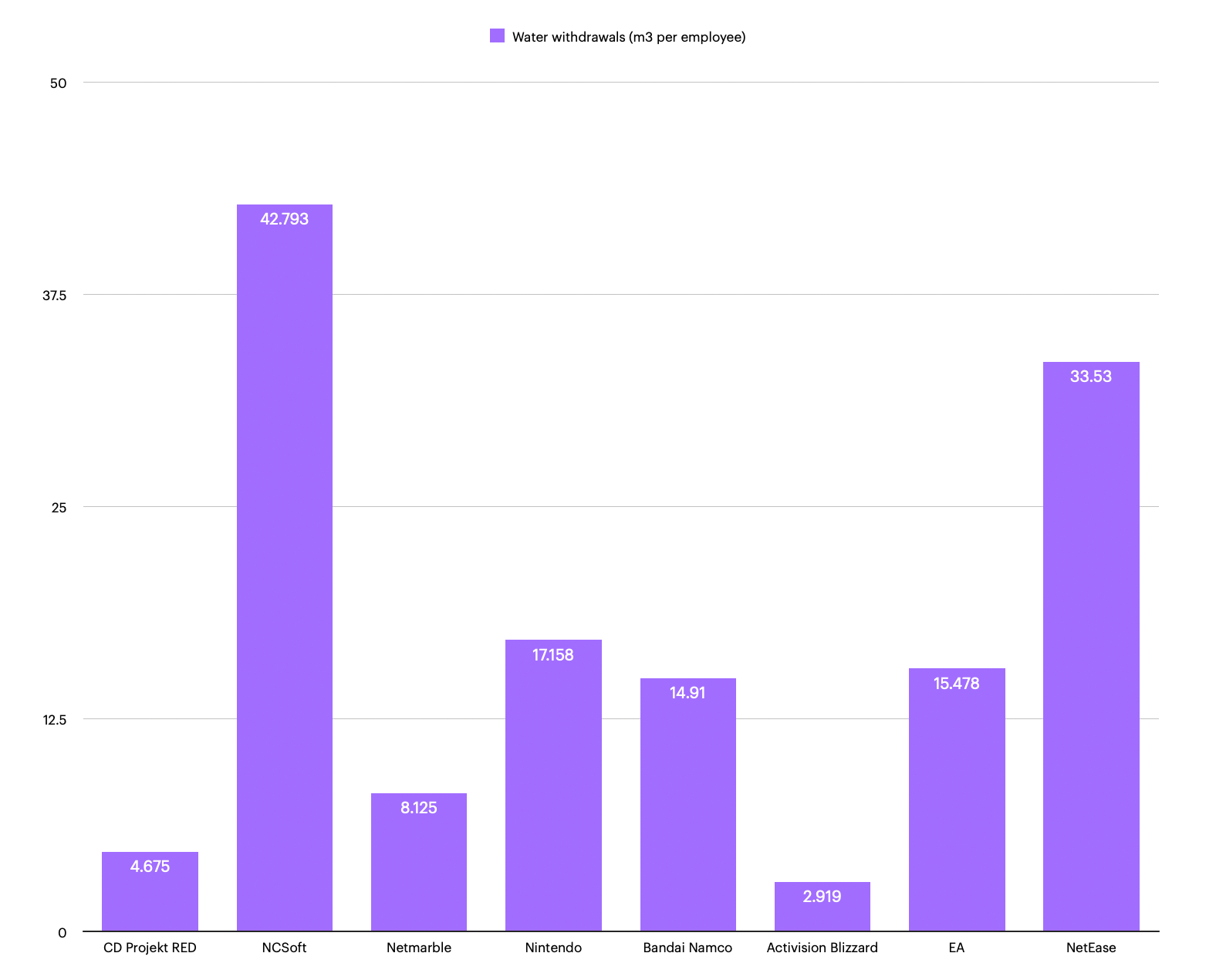
So what’s an average amount of water that a game company might use? From this rather limited sample, it looks like a good guess is somewhere around 10-15 cubic metres of water per person – or 10 - 15,000 litres of water – for each employee on an annual basis. For the gallon enjoyers, that’s 2600-4000 gallons.
Okay, great, we got a result! But water’s a renewable resource, right? It literally falls from the sky – do games even need to think about how much of it they use? Well, yes, because depending on where you are taking that water from you could be contributing to what’s known as water stress.
Water Stress, the World Resources Institute (WRI) cheerfully informs us, refers to
“the ratio of water demand to renewable supply, [which] measures the competition over local water resources. The smaller the gap between supply and demand, the more vulnerable a place is to water shortages. A country facing “extreme water stress” means it is using at least 80% of its available supply, “high water stress” means it is withdrawing 40% of its supply.
So water stress measures how much spare capacity there is in a particular water supply. That's important, given the backdrop of climate change forcing weather patterns to shift, and changing our relationship to water to be even more 'boom/bust' than before. Droughts are getting longer, and the downpours when they do happen are becoming even more torrential, which can lead to disruptions to the ability of municipal water supplies to keep up. Sometimes too much rain adds more sediment to freshwater than the machines and filters can handle – which happened in my part of Western Sydney after major floods in 2021 and 2022. Luckily, the water just tasted a bit crappy for a while, until the flow settled down a bit, but in other cases I've heard of, floods have quite literally caused effluent, stormwater, or farm runoff to enter water that is intended for drinking and... well, you can probably guess how that's bad.
The WRI has also developed a super fascinating tool called the Water Risk Atlas to help us visualise water stress at a highly local level. Here’s a zoomed-out view of Europe and the (surprisingly high) number of regions that are considered to be in high or extreme water stress already.
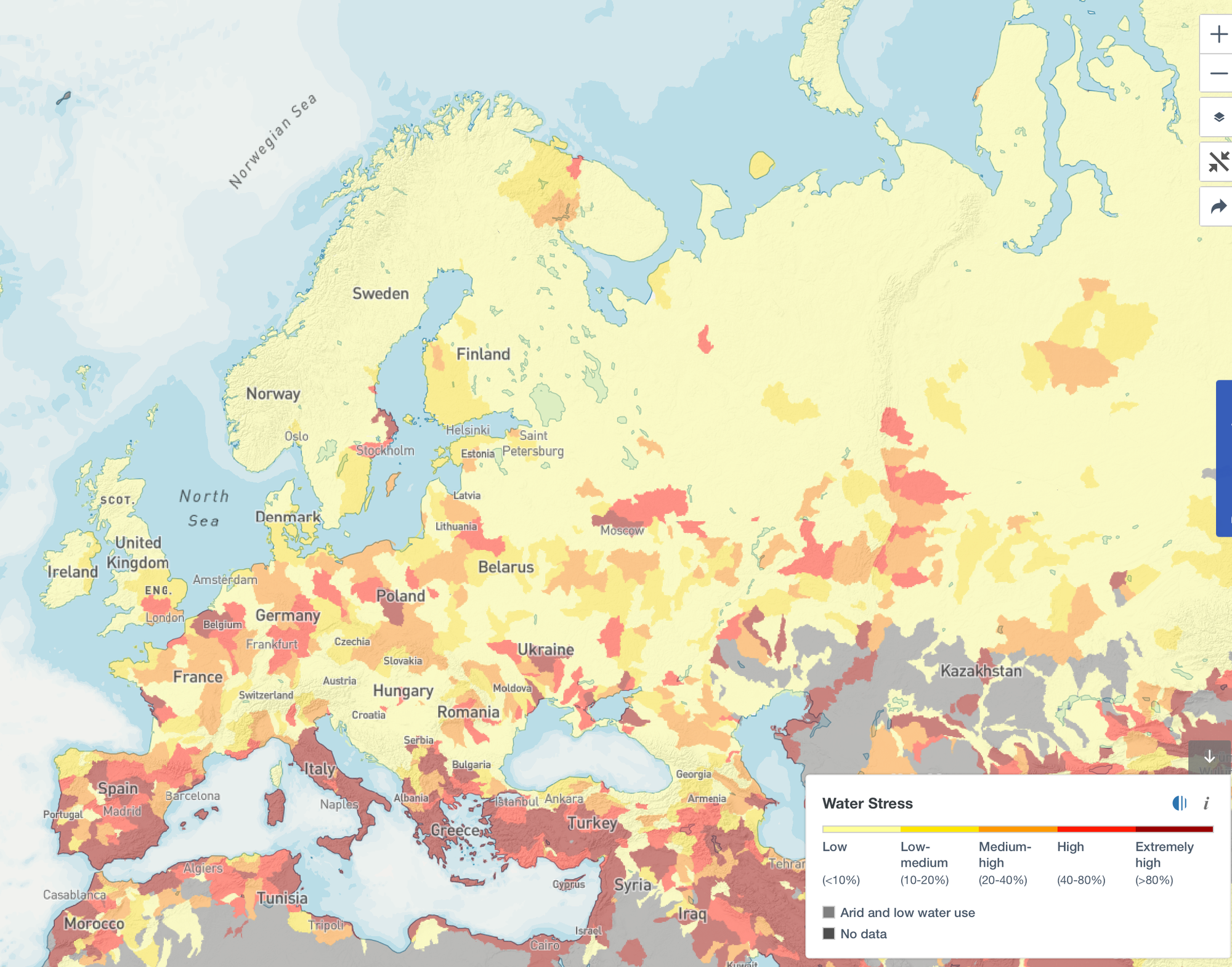
Yes, there are the usual suspects like the entire Mediterranean, but large portions of Poland, Germany, Belgium, France and Spain are also places where water resources are already stretched.
Here’s North America, with an even more stark picture. Huge regions from the centre of the country westward, down into Mexico are at massive risk of water shortages. As I linked in the most recent GTG Links post, Mexico City right now is rapidly running out of water. That is an insane risk as they head into the hottest part of summer.
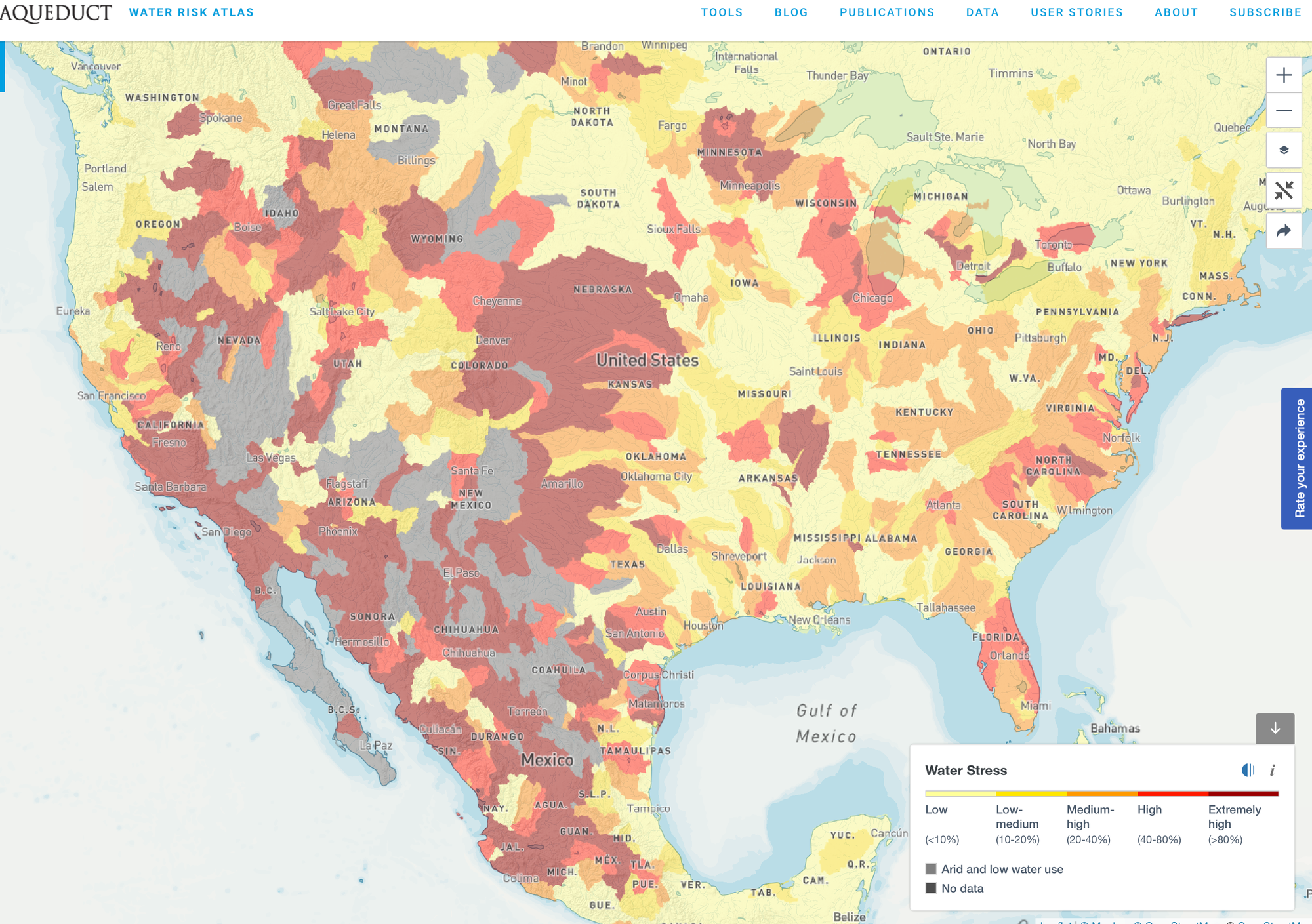
And because so many of the companies in our dataset are from Korea & Japan, here’s a snapshot of that region as well. Well, that's a bit more comfortable.
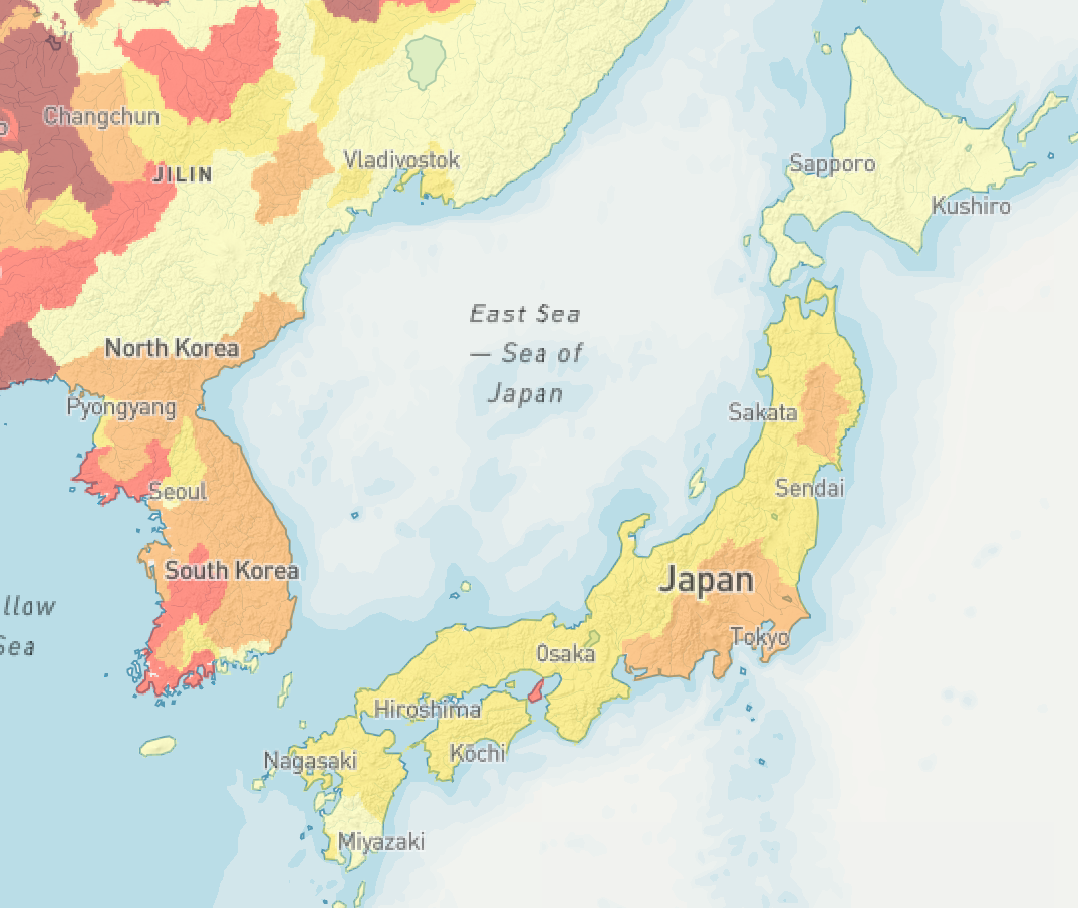
If companies follow certain sustainability standards (like the GRI, or SASB guidance) then they are often required to disclose what portion of their water use occurs in regions of “high or extremely high water stress”, which is a valuable addition to the data about overall volumes.
NCSoft’s report noted curtly that the “Percentage of each in regions with High of Extremely High Baseline Water Stress = NONE”.
In Electronic Arts’ impact report last year, they stated that: "EA consumes 14,800 m3 of water in high or extremely high water stress areas., which is less than 7% of our total global water consumption. Regionally, this consists of less than 6% of North American consumption (8,100 m3), less than 6% of Europe’s consumption (3,300 m3), and less than 27% of consumption in the Asia-Pacific region (3,400 m3).”
And finally, Activision Blizzard (now subsumed within the Microsoft mothership – RIP to that tasty disaggregated data) provided the following figures: “16% comes from regions with high water stress, and 40% comes from regions with extremely high water stress.” So over half AB's water consumption happened in regions of high or extreme water stress. That might seem like a lot, but I guess that’s California for you! It also goes a long way to contextualising why they have managed to have such a low per-capita figure, using just 2.9 m3 per employee per annum, or as little as a fifth of our "average" guesstimate of 10-15 cubic m per person.
So next time you hit an annoying underwater level in a new Mario game, or get stuck on the Water Temple in The Legend of Zelda, spare a thought for the poor, stressed-out, hard-working water systems around the world tirelessly perpetrating the hydrological cycle. Shout out to water! Working overtime since day one keeping game industry campuses' lawns looking lush and making sure toilets get flushed, deep in the industrial belly of the games industry.
Hey thanks for reading to the end. Guess what! I've been extremely, extremely ill again! How good is winter? Make sure you get your flu shot next time it rolls around wherever you are. This month has sucked. Here's to a better back half.